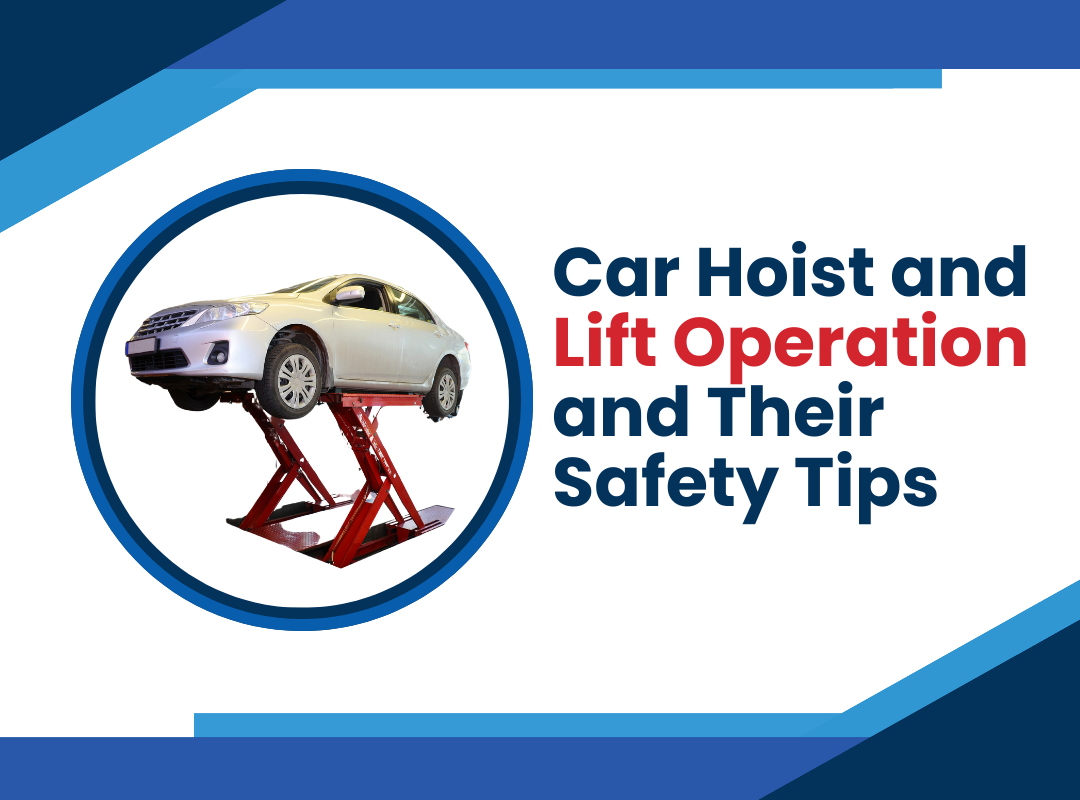Garages and automotive enthusiasts frequently employ car hoists as equipment. It’s crucial to utilize hoists and lifts correctly and safely given the possible risk. Here, we go over some fundamentals for safely and successfully using hoists and lifts.
General Pointers for Using Auto Lifts and Hoists:
- Don’t overburden your hoist or lift and make sure you are aware of its load restrictions. The product nameplate and documentation both list the capacity.
- To ensure that the vehicle’s center of gravity is balanced, position it on the lift or hoist.
- Check the overhead clearances before lifting. Keep an eye out for any antennae, signage, or attachments.
- Lock the car’s doors, boot, and bonnet. Before elevating the car, be sure no one is inside.
- Before lifting, make sure there are no individuals within 2 meters of the vehicle.
- Every day before utilizing the elevator, inspect all of its parts.
- Wear personal protective equipment when working underneath lifted cars (PPE). In order to avoid exposure to debris, rust, and fluid leaks, you should wear facial protection, goggles, or a hard hat.
Putting a Car on a Hoist or Lift:
- Close all doors, put the transmission in neutral, turn off the engine, and look up for any overhead obstructions like radio antennas.
- Put pads or adaptors underneath the suggested contact points in the proper places.
- Make that the drive-on lifts or the runway’s automatic chocking devices are set up before lifting the Hydraulic Lift. Make sure there are enough sturdy blocks to stop the car from moving.
- Raise the lift or hoist about 30 cm so that the wheels are barely off the ground.
- Check again to ensure that the contact pads and any adaptors are correctly configured and that no potentially damaged vehicle components are being loaded.
- Lower and reposition the car on the lift or hoist if it is not level or looks like it might slip.
- Keep an eye out for circumstances that could move the vehicle’s center of gravity and cause it to tumble. For instance, the weight that might move unexpectedly should be checked before raising a vehicle.
Also Read – Everything you Need to Know about Scissor Lift
Lowering a Car with a Hoist or Lift:
- Ensure that the lift is free of any tools, jacks, or other objects.
- Prior to the lift or hoist being dropped, make sure that everyone is standing away from it.
- Lower the lift as low as you can while lowering the vehicle gradually and gently.
- If necessary, adjust the arms or other supports or take out the chocks so you may move the car as you drive it away without touching any sections of the lift.
- Lower the car to the ground before reentering the space.
Things to Watch Out for When Using the Lift:
- Stay at the controls while the lift is in motion.
- The car could roll and fall if you use the lift to raise only one end of it.
- When a car is being lifted or hoisted on a lift, don’t work on it.
- When a vehicle is being lifted or hoisted, don’t shake it.
- Avoid using DIY lifting adaptors in place of wooden blocks or other appropriate Lifting Equipment.
- Wait until all individuals and things are out from below before lowering a lift or hoist.
- Avoid attempting to stabilize the vehicle in the air if it is unstable. Immediately bring it down.
Also Read – How are Hydraulics Scissor Lifts Useful


